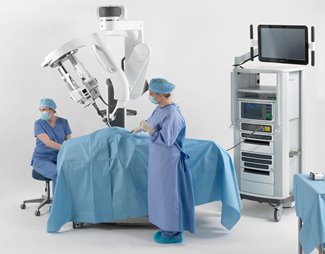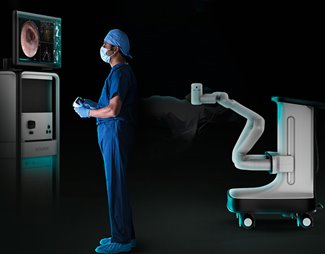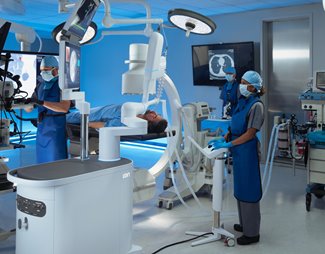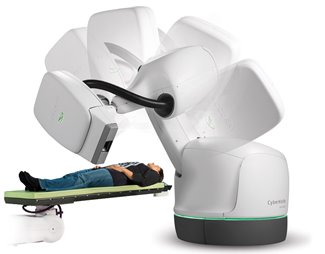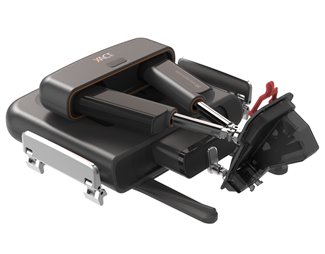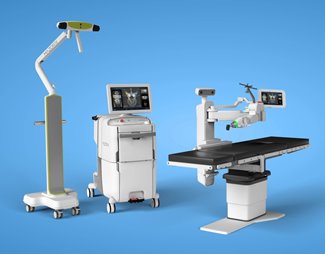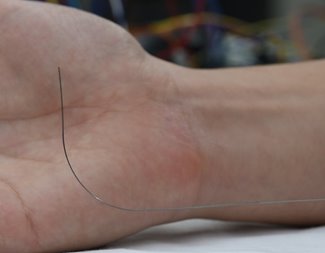7 Medical Robots that May Save Your Life
7 Medical Robots that May Save Your Life
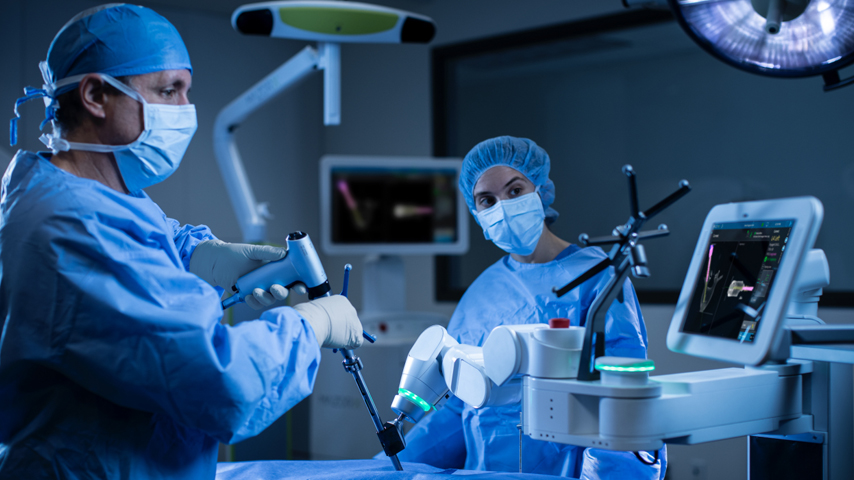

Robots are taking over the operating room. And that’s a good thing.
Misdiagnosis, wrong limbs amputated, patients catching fire, scalpels left in abdomens: Humans in the operating room have been making mistakes, and big ones, for a long time. So maybe it’s about time that robots, which have made such a difference in the worlds of manufacturing and amusement parks, took over from some of our most critical medical tasks.
Of course, talking about having the Terminator perform open heart surgery may not fly. Mistakes or no mistakes, there are many procedures where a little help from an automaton is likely to have things go smoother, faster, and with a greater chance of success. And, in fact, there are already robots out there, in ORs all over the world, helping surgeons cut, stitch, and diagnose—and many more on the way.
“Surgical robots have made great inroads into the operating room over more than two decades and the trend is likely to continue in the years to come,” said Jaydev Desai, a professor in the Wallace H. Coulter Department of Biomedical Engineering at Georgia Tech and Emory University and director of the Georgia Center for Medical Robotics.
Here are seven medical robots helping humans heal—or about to—even if they haven’t taken the Hippocratic oath.
With some 7,500 units operating in some 70 countries, having performed some 12 million procedures—according to the company—Intuitive’s Da Vinci Systems is the bully on the block when it comes to surgical robots. The system is essentially four robotic arms with more degrees of freedom than a surgeon’s hand.
The instruments at the end of the arms are also robotic and capable of making more precise movements and smaller incisions than a surgeon. As a result, patients experience less pain, blood loss, and time in the hospital when compared to the wholly human-run operations.
Indeed, the system—guided by a surgeon in the room—has done hysterectomies and colorectal procedures, fixed hernias and mitral valves, and performed partial and total removal of organs, among many other procedures.
Become a Member: How to Join ASME
It’s not just the hardware that makes the machine so effective. “One of the key benefits of the Da Vinci system is its ability to provide a three-dimensional view of the surgical area, allowing the surgeon to perform complex procedures with greater accuracy,” said Thanh Nho Do, director of the Medical Robotics Lab at the University of New South Wales in Sydney, Australia.
However wild the dominance of the Da Vinci, there’s still room for improvement: “The absence of haptic feedback and the system’s expense, size, and complexity are obstacles that have stymied the more universal adoption of this type of surgical system,” Do said.
Of course, medicine is not all slices and sutures. There’s also the small matter of diagnosis. Johnson & Johnson’s Monarch platform allows doctors to perform a bronchoscopy—basically looking down a patient’s throat into their lungs—hands free—to figure out what’s going on down there.
One of its unique features is the joystick control that allows doctors to steer the camera-on-tube to where they want to go for inspection. The latest version offers exact positioning data to clinicians as they work.
“This is accomplished by merging three navigation technologies: electromagnetics, optical pattern recognition, and robotic kinematic data,” Do said. Now, the robot can also remove kidney stones. Just this February the robot relieved its first kidney stone patient of the agony-causing blockage.
Intuitive also has a robot that performs lung biopsies. Their Ion endoluminal system uses shape sensing guidance, unlike the Monarch which uses electromagnetic guidance. Without magnets, the Ion is able to provide continuous x-ray imaging.
The Ion also has a 3.5-millimeter scope—compared to the Monarch’s 4.4—allowing it to more easily navigate narrower passages. And the Ion has a unique method for mapping the scope’s path. “By incorporating a thin slice preoperative CT scan, the surgeon can create a 3D airway tree showing the target’s navigation pathway with defined anatomy bounds,” Do said.
The business end of the CyberKnife looks like a giant upside down Pepto Bismol bottle, about to pour its contents all over the patient below. But what it pours is a high dose of radiation with pinpoint accuracy.
It owes this skill to its linear accelerator. The beam of radiation it sends out is precise enough to seriously curtail exposure to healthy tissue surrounding the target. The CyberKnife can be aimed at tumors all over the body without the need for incisions or surgery.
XACT Robotics has created a robot, the ACE, to provide radiation for percutaneous procedures, that is, going beneath the skin. A radiologist will locate the target, choose the entry point, and then the robot takes over. Thanks to its non-linear steering, it too can adjust its trajectory when a patient breath and moves.
The chief attraction of the XACT robot is its size. At less than four pounds, and roughly the size of a drone controller, it has the potential to perform its tasks in places other than the operating room. Cleared for use by the FDA in October of 2022, the robot has already been hard at work doing biopsies, performing drainage operations, delivering drugs, and ablating.
Some surgical robots have a narrower field of operation. Medtronic’s Mazor X Stealth Edition, for instance, is a tool for spinal surgery. Surgeons can use scans of patient spines to plan exactly where to place implants previous to entering the operating room. When the day of surgery arrives, the system lines up scans and plans with the patient’s actual spine.
“With features such as customizable implant selection, optimal implant trajectories, and 3D analytics, planning allows you to work towards construct optimization and makes the procedure predictable,” Do said. Surgeons can watch real-time imaging of the implant entering the patient and can compare it with their pre-operative plan. In its four years active in operating rooms the technology has been used with more than 100,000 procedures.
To snake through the body’s smaller vessels and clear blockages, The Medical Robotics and Automation (RoboMed) Laboratory at Georgia Tech, led by Desai, have created the smallest robotically steerable guidewire on the planet that is mechanically actuated. The way doctors currently work their way to a spot in an artery that might need clearing is akin to using a plumber’s snake to help clear a clogged drain: there’s no robotic control at the tip, and therefore no way to control how much the tip should bend, and what length of the tip should bend, let alone bending along the guidewire.
But the Georgia Tech COAST (for COaxially Aligned STeerable) guidewire robot is essentially a trio of tubes: an outer tube, middle tube, and inner tube. The outer tube and the middle tube are micromachined and the inner tube facilitates the passage of a tendon that is attached to the distal end of the middle tube. By controlling the relative motion of the tubes and pulling the tendon, it is possible to control the curvature as well as the bending length of the guidewire.
And the outer tube has an outer diameter of a mere 400 microns. Thus, it can bend the guidewire to match the contour of the vasculature it’s traversing. “The technology has been licensed to a company,” said Desai, who led the research, “and is finding its way to daylight, for commercialization.”
Michael Abrams is a technology writer in Westfield, N.J.
Of course, talking about having the Terminator perform open heart surgery may not fly. Mistakes or no mistakes, there are many procedures where a little help from an automaton is likely to have things go smoother, faster, and with a greater chance of success. And, in fact, there are already robots out there, in ORs all over the world, helping surgeons cut, stitch, and diagnose—and many more on the way.
“Surgical robots have made great inroads into the operating room over more than two decades and the trend is likely to continue in the years to come,” said Jaydev Desai, a professor in the Wallace H. Coulter Department of Biomedical Engineering at Georgia Tech and Emory University and director of the Georgia Center for Medical Robotics.
Here are seven medical robots helping humans heal—or about to—even if they haven’t taken the Hippocratic oath.
Da Vinci
With some 7,500 units operating in some 70 countries, having performed some 12 million procedures—according to the company—Intuitive’s Da Vinci Systems is the bully on the block when it comes to surgical robots. The system is essentially four robotic arms with more degrees of freedom than a surgeon’s hand.
The instruments at the end of the arms are also robotic and capable of making more precise movements and smaller incisions than a surgeon. As a result, patients experience less pain, blood loss, and time in the hospital when compared to the wholly human-run operations.
Indeed, the system—guided by a surgeon in the room—has done hysterectomies and colorectal procedures, fixed hernias and mitral valves, and performed partial and total removal of organs, among many other procedures.
Become a Member: How to Join ASME
It’s not just the hardware that makes the machine so effective. “One of the key benefits of the Da Vinci system is its ability to provide a three-dimensional view of the surgical area, allowing the surgeon to perform complex procedures with greater accuracy,” said Thanh Nho Do, director of the Medical Robotics Lab at the University of New South Wales in Sydney, Australia.
However wild the dominance of the Da Vinci, there’s still room for improvement: “The absence of haptic feedback and the system’s expense, size, and complexity are obstacles that have stymied the more universal adoption of this type of surgical system,” Do said.
Monarch
Of course, medicine is not all slices and sutures. There’s also the small matter of diagnosis. Johnson & Johnson’s Monarch platform allows doctors to perform a bronchoscopy—basically looking down a patient’s throat into their lungs—hands free—to figure out what’s going on down there.
One of its unique features is the joystick control that allows doctors to steer the camera-on-tube to where they want to go for inspection. The latest version offers exact positioning data to clinicians as they work.
“This is accomplished by merging three navigation technologies: electromagnetics, optical pattern recognition, and robotic kinematic data,” Do said. Now, the robot can also remove kidney stones. Just this February the robot relieved its first kidney stone patient of the agony-causing blockage.
Ion
Intuitive also has a robot that performs lung biopsies. Their Ion endoluminal system uses shape sensing guidance, unlike the Monarch which uses electromagnetic guidance. Without magnets, the Ion is able to provide continuous x-ray imaging.
The Ion also has a 3.5-millimeter scope—compared to the Monarch’s 4.4—allowing it to more easily navigate narrower passages. And the Ion has a unique method for mapping the scope’s path. “By incorporating a thin slice preoperative CT scan, the surgeon can create a 3D airway tree showing the target’s navigation pathway with defined anatomy bounds,” Do said.
Cyber Knife
The business end of the CyberKnife looks like a giant upside down Pepto Bismol bottle, about to pour its contents all over the patient below. But what it pours is a high dose of radiation with pinpoint accuracy.
It owes this skill to its linear accelerator. The beam of radiation it sends out is precise enough to seriously curtail exposure to healthy tissue surrounding the target. The CyberKnife can be aimed at tumors all over the body without the need for incisions or surgery.
More for You: Infographic: Robots in the Surgical Suite
The system uses a technology called Synchrony that monitors motion and adjusts the beam accordingly. So, patients needn’t worry about staying absolutely still and require no restraining devices or breath holding. Patients don’t even need anesthesia—the treatment is painless—and can eat and drink whatever they want before treatment.ACE
XACT Robotics has created a robot, the ACE, to provide radiation for percutaneous procedures, that is, going beneath the skin. A radiologist will locate the target, choose the entry point, and then the robot takes over. Thanks to its non-linear steering, it too can adjust its trajectory when a patient breath and moves.
The chief attraction of the XACT robot is its size. At less than four pounds, and roughly the size of a drone controller, it has the potential to perform its tasks in places other than the operating room. Cleared for use by the FDA in October of 2022, the robot has already been hard at work doing biopsies, performing drainage operations, delivering drugs, and ablating.
Mazor X Stealth Edition
Some surgical robots have a narrower field of operation. Medtronic’s Mazor X Stealth Edition, for instance, is a tool for spinal surgery. Surgeons can use scans of patient spines to plan exactly where to place implants previous to entering the operating room. When the day of surgery arrives, the system lines up scans and plans with the patient’s actual spine.
“With features such as customizable implant selection, optimal implant trajectories, and 3D analytics, planning allows you to work towards construct optimization and makes the procedure predictable,” Do said. Surgeons can watch real-time imaging of the implant entering the patient and can compare it with their pre-operative plan. In its four years active in operating rooms the technology has been used with more than 100,000 procedures.
COAST
To snake through the body’s smaller vessels and clear blockages, The Medical Robotics and Automation (RoboMed) Laboratory at Georgia Tech, led by Desai, have created the smallest robotically steerable guidewire on the planet that is mechanically actuated. The way doctors currently work their way to a spot in an artery that might need clearing is akin to using a plumber’s snake to help clear a clogged drain: there’s no robotic control at the tip, and therefore no way to control how much the tip should bend, and what length of the tip should bend, let alone bending along the guidewire.
But the Georgia Tech COAST (for COaxially Aligned STeerable) guidewire robot is essentially a trio of tubes: an outer tube, middle tube, and inner tube. The outer tube and the middle tube are micromachined and the inner tube facilitates the passage of a tendon that is attached to the distal end of the middle tube. By controlling the relative motion of the tubes and pulling the tendon, it is possible to control the curvature as well as the bending length of the guidewire.
And the outer tube has an outer diameter of a mere 400 microns. Thus, it can bend the guidewire to match the contour of the vasculature it’s traversing. “The technology has been licensed to a company,” said Desai, who led the research, “and is finding its way to daylight, for commercialization.”
Michael Abrams is a technology writer in Westfield, N.J.


